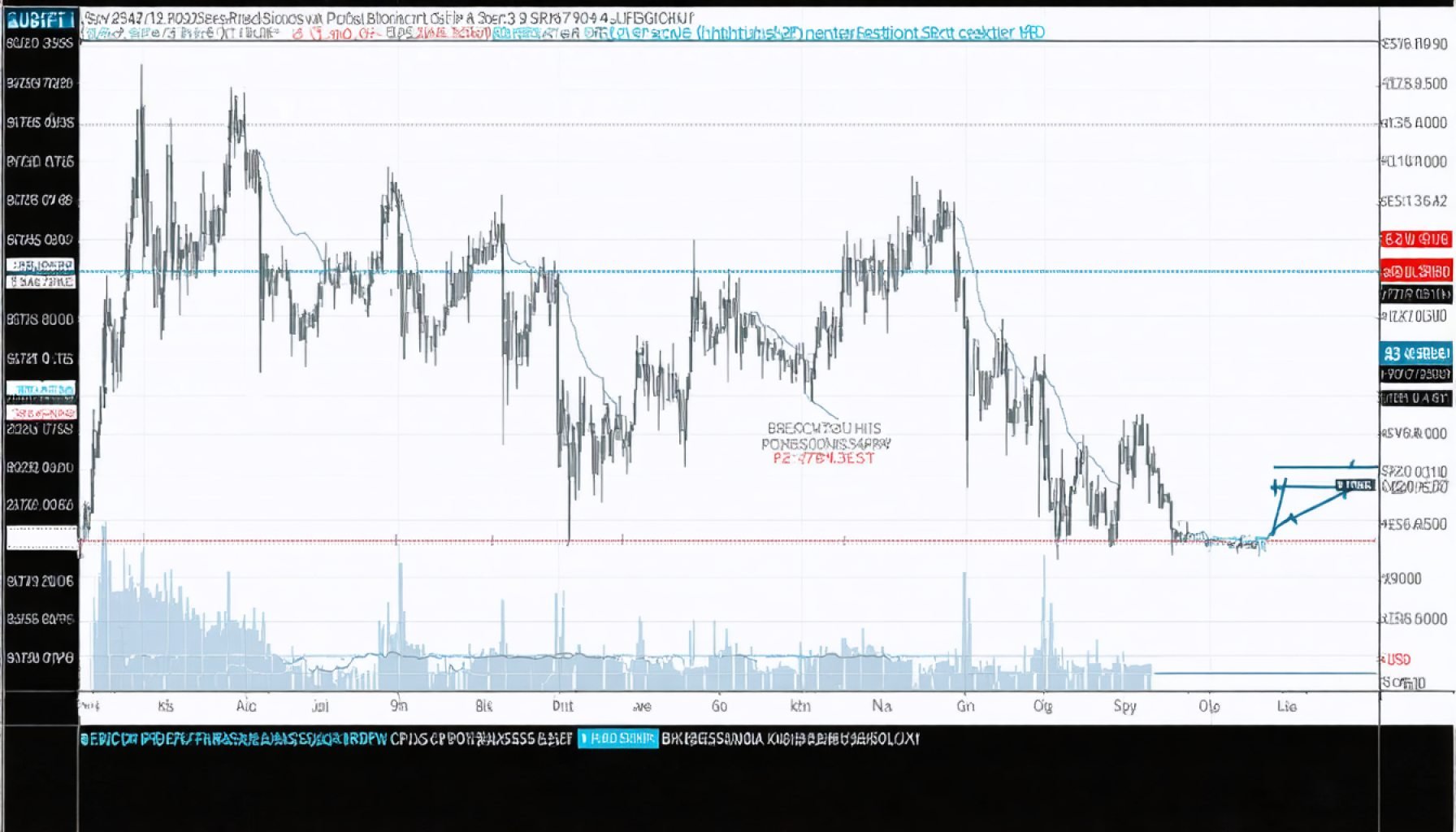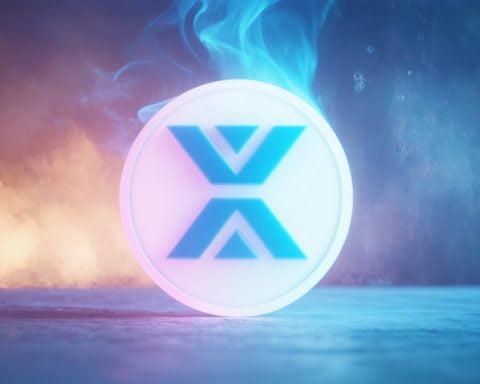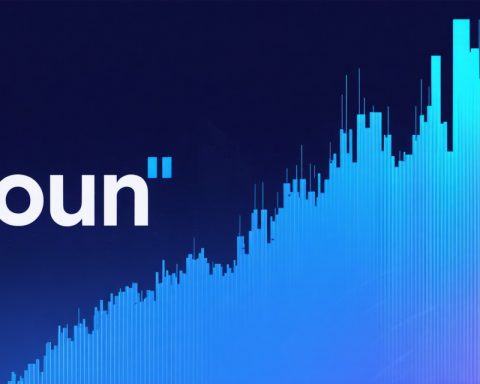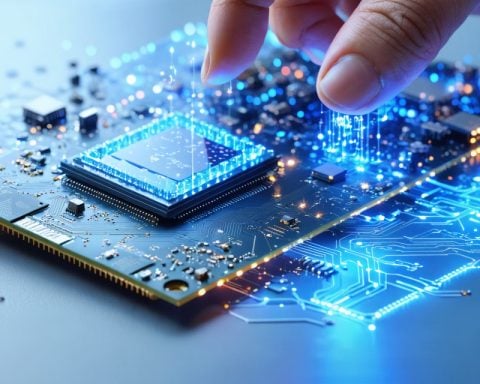- XRP surges to $2.59, a 450% increase since November 2024, amid speculations about a new crypto era.
- Brazil approves the first spot XRP ETF, potentially setting the stage for U.S. endorsement.
- Predictions for XRP’s value range from a staggering $5,000 to more conservative estimates.
- PlutoChain ($PLUTO) offers a revolutionary Layer-2 solution to Bitcoin’s transaction delays and high fees.
- With transaction times reduced to two seconds, PlutoChain enhances Bitcoin’s scalability and integrates with Ethereum’s applications.
- PlutoChain ensures security and decentralized governance through rigorous audits.
- Both XRP and PlutoChain could significantly impact the digital finance landscape, heralding a potential financial renaissance.
The digital currency realm teeters on the edge of transformation. With XRP making headlines and PlutoChain offering tantalizing promises, investors and enthusiasts are left speculating about the dawn of a new crypto era.
In a market buzzing with excitement, XRP is surging. Trading at a remarkable $2.59, its value has skyrocketed by 450% since November 2024. This leap comes as the SEC examines a slew of ETF applications, following Brazil’s groundbreaking approval of a spot XRP ETF. As whispers of institutional interest grow louder, many watch eagerly to see if a U.S. endorsement could send XRP into the stratosphere. Calculations suggest a far-fetched $5,000 per XRP, though some seasoned voices anticipate more conservative climbs — yet even a modest hike could set early adopters for life.
Meanwhile, in the shadows of Bitcoin’s towering legacy, PlutoChain ($PLUTO) emerges as a potential savior to its nagging woes. Dogged by delays and daunting fees, Bitcoin has long yearned for a solution. Enter PlutoChain, promising a revolutionary Layer-2 hybrid innovation. It doesn’t just promise speed—reducing Bitcoin’s transaction time to a swift two seconds—but also unrivaled scalability and an array of new applications. By harmonizing with Ethereum’s applications, from NFTs to DeFi tools, it could open Bitcoin to a universe of possibilities.
With security bolstered through rigorous audits and keeping governance decentralized, PlutoChain’s promise is compelling: faster, cheaper, and more user-friendly transactions.
As the landscape evolves, the key question emerges: Are we witnessing the dawn of a financial renaissance, with XRP and PlutoChain leading the charge? Investors are at the brink of what could be a monumental shift, one that may redefine the very fabric of digital finance.
Could XRP and PlutoChain Usher in a Crypto Golden Age?
The Rise of XRP: Features, Market Trends, and Predictions
Features & Specifications:
XRP, known for its efficiency in cross-border transactions, continues to lead in the crypto space. Its unique consensus algorithm offers transaction speeds that are significantly faster than Bitcoin or Ethereum. Although the maximalist claim of $5,000 per XRP seems exaggerated, even moderate growth can be highly lucrative.
Market Trends & Predictions:
The approval of a spot XRP ETF in Brazil may ignite further global acceptance, potentially leading to a sharp increase in institutional participation. Analysts suggest that if a similar approval is obtained in the U.S., we could see substantial price increases. Experts remain divided, with some predicting highs that could rival Bitcoin’s market cap, while others anticipate more tempered growth.
Security & Sustainability Concerns:
Security remains a top priority, and XRP’s decentralized nature provides a solid foundation against fraud. However, controversies around centralization continue to spark debate. Enhancements in sustainability efforts could further solidify its position.
PlutoChain’s Promise: Features, Use Cases, and Drawbacks
Features & Specifications:
PlutoChain functions as a Layer-2 scaling solution built on Bitcoin’s infrastructure but also integrates with Ethereum, providing rapid transaction speeds and broad scalability. With transactions being validated in under two seconds, it effectively reduces network congestion and costs.
Real-World Use Cases:
Possible applications include expanding decentralized finance tools and bringing NFTs into the Bitcoin ecosystem. Its compatibility with Ethereum applications provides endless opportunities for developers and investors alike.
Controversies & Limitations:
While PlutoChain offers innovation, its novel approach brings concerns regarding interoperability with existing systems and potential security vulnerabilities associated with Layer-2 solutions. Despite rigorous audits, skepticism remains.
Comparative Analysis: XRP vs. PlutoChain
Pros & Cons Overview:
– XRP:
– Pros: Fast and cost-effective transactions, growing institutional interest.
– Cons: Ongoing regulatory scrutiny, centralization concerns.
– PlutoChain:
– Pros: Speedy transactions, scalability, interaction with Bitcoin and Ethereum ecosystems.
– Cons: Potential integration challenges, early-stage technology risks.
Quick Tips for Investors
– Diversify Portfolios: Consider holding both XRP and PlutoChain to hedge against uncertainties and capitalize on different opportunities.
– Stay Informed: Regularly follow industry updates, especially around regulatory changes. Websites like CoinDesk and CoinGecko offer reliable news and analysis.
– Evaluate Risk Tolerance: Embrace balanced investment strategies that align with your financial goals and risk appetite.
By understanding the potential and challenges of XRPs and PlutoChain, investors can position themselves wisely in the fast-evolving landscape of digital currencies.



















